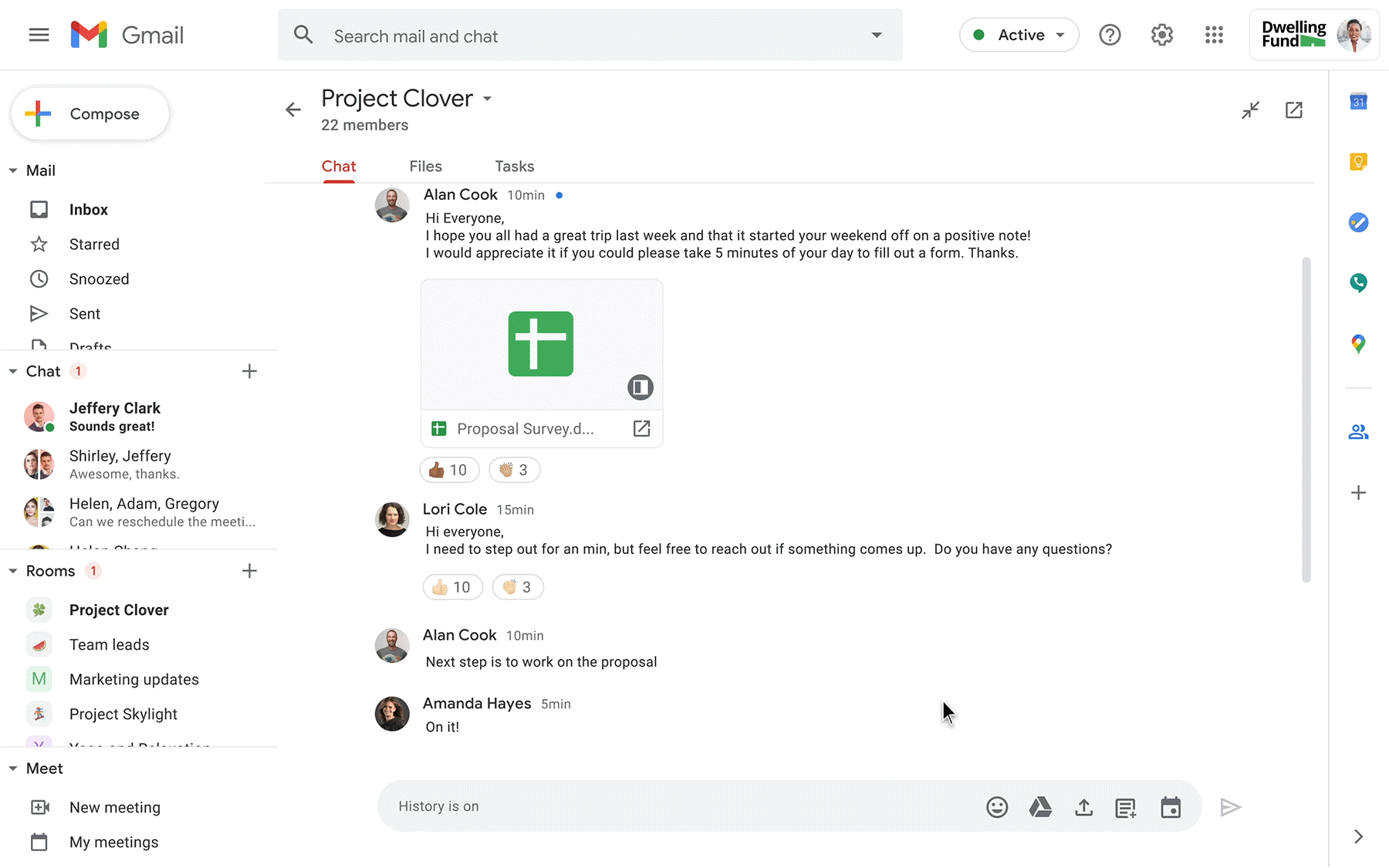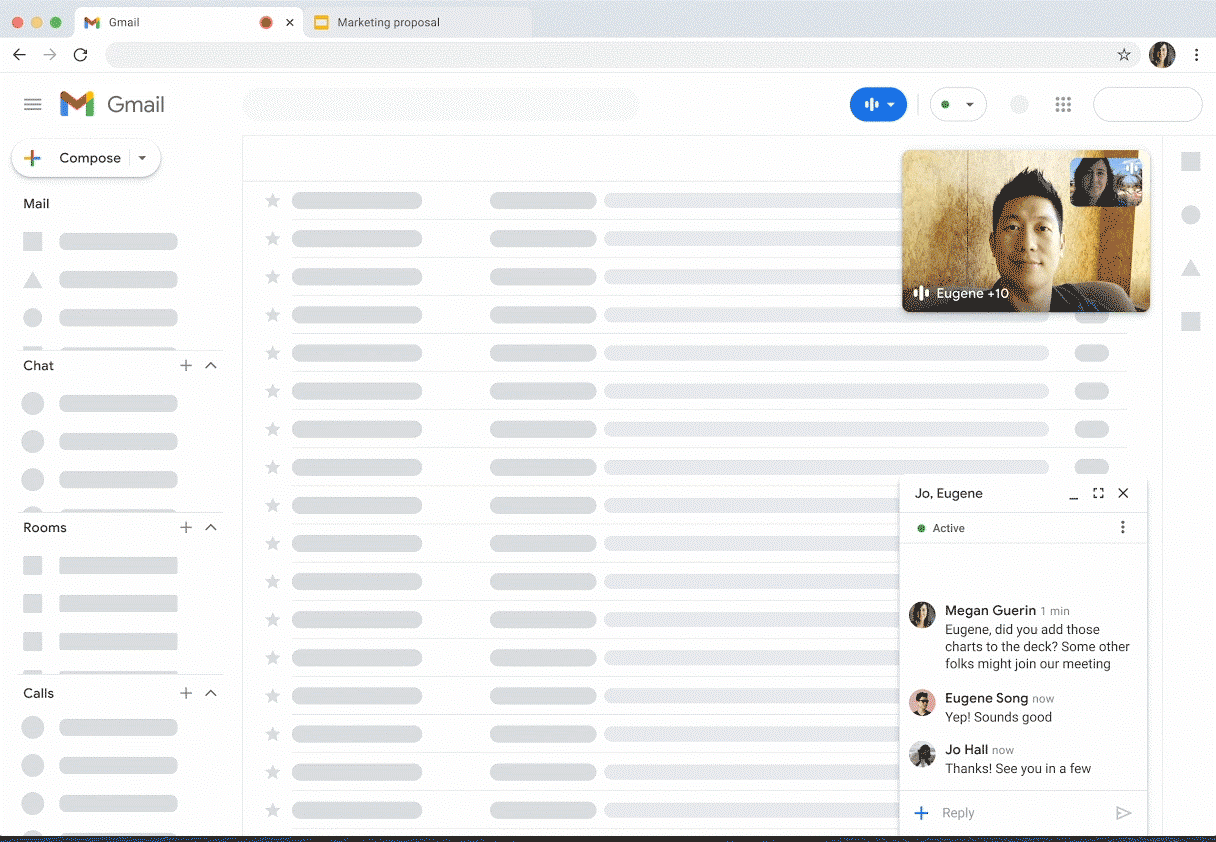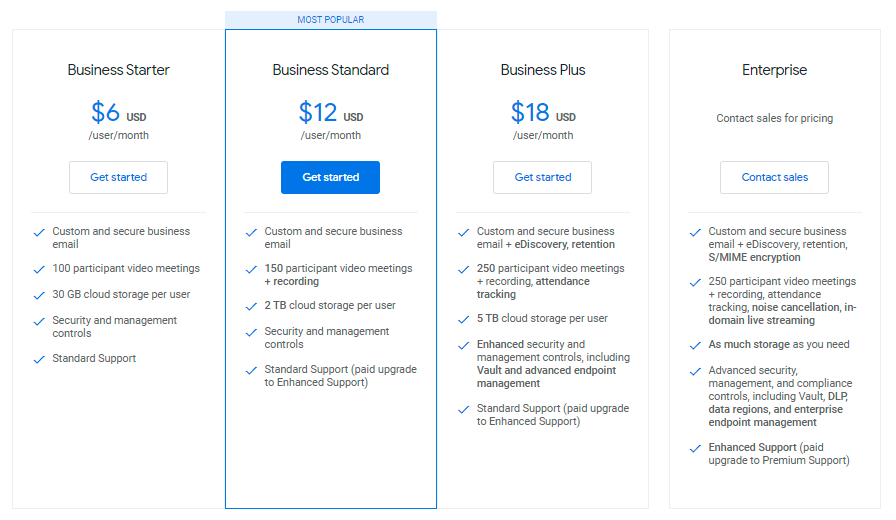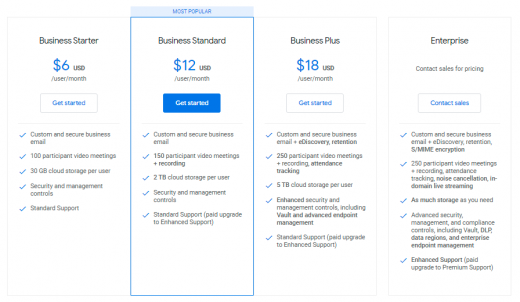Google Workspace vs. G Suite: Demystifying Google Workspace
Software as a Service (SaaS) applications have transformed the way we work, right from how we create, store and access data, to how we collaborate and everything in between. Unlike old-fashioned applications that require you to install a software on your computer to be able to use them, SaaS apps only require you to subscribe and login to your SaaS account to access them. These applications are easy to set up, are user-friendly and are great productivity tools, even for mobile workforces. One such app is Google Workspace — previously known as Google Apps for Work and G Suite.
Google’s G Suite was a collection of productivity and collaboration tools used by more than six million businesses across the globe. Considering its popularity and large customer base, you’re probably wondering why it has been rebranded as Google Workspace, what the difference between them is, what happened to G Suite and what’s new in Google Workspace. Let’s find out in this blog.
A Look Back at G Suite
Google Apps for Your Domain was the original name of G Suite and was launched in 2006. It was later rebranded as G Suite in 2016. G Suite was a set of online tools designed to enhance communication, collaboration and productivity. G Suite applications were available via Google cloud and could be accessed on any device with internet connectivity.
Many G Suite users would argue that the cloud-based platform was one of the best productivity solutions available. While tools like Hangouts, Gmail and Currents enabled effective communication, productivity apps like Docs, Sheets, Sites, Keep, Forms, Calendar and Slides aided in improving collaboration and efficiency. Additionally, G Suite users could store files and access data from anywhere and at any time through Google Drive.
What Is Google Workspace?
In simple terms, Google Workspace is the new G Suite. Google rebranded G Suite as Google Workspace on October 6, 2020 to meet the needs of its highly distributed (remote/hybrid) users. Google Workspace is a collection of cloud-based productivity and collaboration tools for businesses, institutes and nonprofit organizations.
Google Workspace includes all popular cloud-based productivity and collaboration tools that were available in G Suite, such as Gmail, Docs, Sheets, Slides, Contacts, Drive, Calendar, Meet, Chat, Currents and so on — only more integrated and better. The web-based products are available via monthly subscription plans.
Is Google Workspace a Part of G Suite?
Google Workspace is an evolved version of G Suite designed for seamless integration between Google applications for productivity, team collaboration and communication. Over the years, the way we work and the concept of a work environment have changed drastically, and so has G Suite. Google’s move to rebrand G Suite as Google Workspace signifies this shift. As Javier Soltero, VP and GM of Google Workspace says, “Our new Google Workspace brand reflects how, over time, our products have become more integrated, connected and helpful.”
What Does Google Workspace Include?
With Workspace, Google aims to provide a more unified experience across its productivity and collaboration tools. Google offers a variety of plans, such as Business Starter, Business Standard, Business Plus and Enterprise, to cater to businesses of all sizes. All Google Workspace editions include Gmail, Calendar, Meet, Chat, Drive, Docs, Sheets, Slides, Forms, Sites, etc., that were previously available on G Suite. Google also offers Workspace subscription options for individuals, education and nonprofit organizations.
Business Starter and Business Standard plans include essential productivity and collaboration features such as custom emails, cloud storage, security and management controls and more. The Business Plus and Enterprise plans provide enhanced security and management controls, including Vault and advanced endpoint management. These plans also include eDiscovery and retention for legal and compliance purposes. The Enterprise license provides advanced security and management and compliance controls, including Secure/Multipurpose Internet Mail Extensions (S/MIME) for email message encryption, data loss prevention (DLP), data regions and enterprise endpoint management.
Is Google Workspace Free?
Google Workspace is available to everyone with a Google account. Google offers users a variety of Google Workspace tools like Gmail, Meet, Chat, Drive, Docs, Sheets, Slides and more, for free.
However, to get more out of your Google Workspace, you must subscribe to paid versions. With paid Google Workspace editions, you can customize your email address, increase your storage space, access advanced security and management features and get premium support.
Google Workspace vs. G Suite
The shift from G Suite to Google Workspace is more than just a rebrand and new logos. To begin with, Google changed the names of the previous G Suite editions. The table below shows the new Google Workspace Editions for enterprise family, education and nonprofits.
Previous Name New Name
| G Suite Enterprise | Google Workspace Enterprise Plus |
| G Suite Essentials | Google Workspace Essentials |
| G Suite for Education | Google Workspace for Education Fundamentals |
| G Suite Enterprise for Education | Google Workspace for Education Plus |
| G Suite for Nonprofits | Google Workspace for Nonprofits |
Source: Google
Google aims to transform the future of work with its tightly integrated product offerings. With Workspace, Google introduced three major changes:
1) A Unified Experience: Google Workspace brings all the important tools you need to get the job done — chat, email, voice and video calling, and content management tools — in one place. This greatly reduces time spent switching between different applications, enables a cohesive work environment for better collaboration and improves team efficiency.
With guest access features integrated into Chat and Drive, you can effectively connect with your customers and business partners. This allows you to seamlessly create, share and work on a document together — all from a single place.

Image Credit: Google
The Meet picture-in-picture in Gmail and Chat is Google’s effort to reinforce human connections. With this feature, you can see and hear your team members while working together on a task.

Image Credit: Google
2) A New Identity: Google Workspace reflects the deep integration between its products. According to Javier Soltero, the new four-color icons you see in Gmail, Drive, Calendar, Meet and other tools, represent the company’s commitment to building integrated communication and collaboration experiences for everyone.
3) Suitable for a Broad Range of Users: Every business has its own unique needs and challenges that require customized solutions. Google Workspace aims to solve these by offering solutions tailored to meet the unique requirements of its diverse customers. Google Workspace editions are designed to give customers more choice and cater to businesses of all sizes.
The table below shows the current Google Workspace editions and pricing:

Source: Google
How to Migrate From G Suite to Google Workspace
To transition from G Suite to Google Workspace, you must upgrade or downgrade to one of the Google Workspace editions. However, if you are subscribed to an active Annual/Fixed-Term G Suite plan, your subscription will remain unchanged. You can migrate to Google Workspace once the subscription period ends.
Data Protection in Google Workspace
Google data centers are protected by state-of-the-art security infrastructure and processes, which make them virtually impossible to breach directly. However, the architectural and functional aspects of Google Workspace make your domain vulnerable to compromise and data loss through human mistakes, programmatic errors, malicious insider activity, phishing and other emerging threats.
Additionally, Google follows the “Shared Responsibility Model” where the vendor assumes responsibility for application availability and everything it entails, while the customer retains responsibility for application data, administration and user management.
As such, Google is responsible for the integrity of the data center — security, infrastructure and operations — to ensure the availability and performance of their services. On the other hand, you are operationally and contractually responsible for the integrity of your domain, security of user credentials and protection of your Google Workspace data.
Business & Finance Articles on Business 2 Community
(73)


